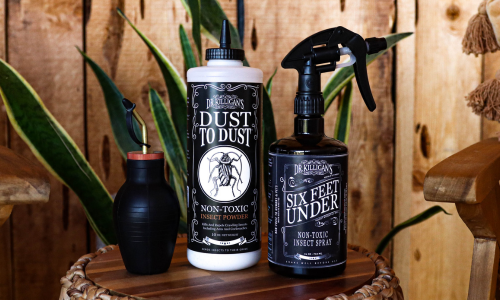Welcome to Dr. Killigan's world of meticulous pest analysis. In this detailed exploration, we focus on discerning the subtle differences between termites and ants – often confused, yet distinctly different pests. Accurate identification is pivotal for targeted and effective pest control.
Flying ants vs flying termites: Wings of confusion
The distinction between flying ants and flying termites is a cornerstone in understanding and managing home pests. Flying ants are marked by their pinched waists and wings of differing lengths, presenting an easily recognizable silhouette. Their flight is often less coordinated, and they are typically seen in smaller numbers. Conversely, flying termites exhibit a more uniform appearance, with equal-length wings and a straighter body shape. Their swarms are larger and more organized, indicating potential termite infestations.
This differentiation is more than a mere curiosity—it's a crucial aspect of home pest management. Recognizing these differences enables homeowners to take appropriate and timely action. For flying ants, simple preventive measures may suffice. However, spotting flying termites often signals the need for immediate professional intervention due to their potentially destructive nature. Understanding these nuances is not just about identification; it's about safeguarding your home from potential structural damage.
Ant droppings vs termite droppings: Tiny telltale signs

Understanding the difference between termite and ant droppings is crucial for identifying infestations. Ant droppings are generally less noticeable and do not appear uniform. They are often mixed with bits of soil and other debris from their digging activities. Ant droppings can include fragments of dead insects and resemble general household dust or debris.
In contrast, termite droppings, often referred to as 'termite frass,' are distinctively shaped like small, wood-colored pellets. These droppings are often found near termite nests and serve as a clear sign of their presence.
Carpenter ant damage vs termite damage: Destructive patterns
Carpenter ants are artists, crafting smooth tunnels in wood, especially the damp and damaged kind. They excavate with precision, creating galleries for their nests but shunning the idea of eating wood. No wood munching means no droppings left behind.
Termites, though, are the voracious ones. They consume wood, causing much more than surface damage. Their feasting results in hollowed spaces filled with their frass, a mix of wood particles and mud-like substances. It's a clear sign of their destructive banquet within your home's structure. Recognizing these patterns is key – carpenter ant artistry versus termite turmoil.
Carpenter ant vs termite: Identifying the culprit

In the realm of Dr. Killigan's insightful pest identification, discerning between carpenter ants and termites is key. Carpenter ants, the skilled wood sculptors, meticulously carve out their nests in wood, preferring moist and compromised timber. They leave behind sleek, smooth galleries, a testament to their non-destructive nesting habits, as they do not consume the wood.
Termites, however, are the true wood-devourers of the insect world. These pests voraciously feed on wood, leading to extensive structural damage over time. The hallmark of their presence is not just the hollowed-out wood they leave in their wake, but also the accumulation of their distinctive droppings, known as frass. This clear sign of termite activity is a crucial indicator in the battle against these destructive pests.
Dr. Killigan's approach to pest management
At Dr. Killigan's, we pride ourselves on an eco-conscious pest control approach, harnessing the power of plant-based ingredients. Our methods are designed to be both highly effective in pest management and safe for your home environment. We emphasize understanding the unique behaviors and signs of each pest, allowing us to customize our strategies. This means using the most suitable and environmentally friendly solutions, whether it involves preventive measures or specific treatments. Our commitment is to provide safe and effective pest control options, respecting both the environment and your needs. This holistic approach ensures that our solutions are not only effective in dealing with current infestations but also in preventing future occurrences.
In-depth strategy: Practical solutions for homeowners

At Dr. Killigan's, we advocate for a proactive and responsive approach to pest control. Begin by regularly inspecting your home for potential pest entry points. Maintaining dry conditions, especially in susceptible areas, is a key preventive measure against pests like termites and ants.
For active infestations, we recommend a two-pronged strategy using our products, Dust to Dust and Six Feet Under. Dust to Dust Non-Toxic Insect Powder, an environmentally safe powder, should be liberally applied to common pest pathways and entry points. Its fine silica particles work to dehydrate and eliminate pests on contact. To maximize its effectiveness, make sure it remains undisturbed in the applied areas.
Complement this with Six Feet Under Non-Toxic Insect Spray, a natural spray with lasting residual effects. Apply it generously in areas where pest activity is noted, forming a protective barrier. This spray works by deterring pests from re-establishing their pathways, further fortifying your home against invasions. For ongoing protection, reapply Six Feet Under regularly.
These solutions offer a balanced DIY approach to pest control, ensuring both safety and environmental responsibility. By integrating these products into your pest management routine, you can effectively secure your home against termite and ant infestations.
Conclusion: Take action for a pest-free home
In conclusion, discerning between termite and ant infestations, as well as understanding the difference between termite frass and carpenter ant frass, is crucial for effective home management. Dr. Killigan’s expertise offers you the tools and knowledge for decisive action. Don’t let pests threaten your sanctuary. Take charge now with Dr. Killigan's eco-friendly and effective solutions, and maintain your home as a haven from pests. Act today for a secure and healthy living environment, and remember, with Dr. Killigan, you're not just controlling pests, you're ensuring lasting peace and safety for your home.





















